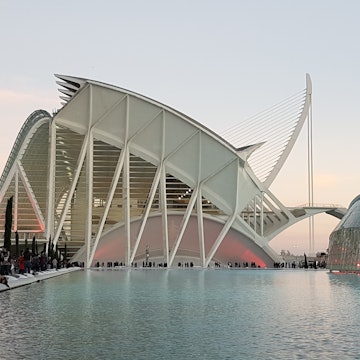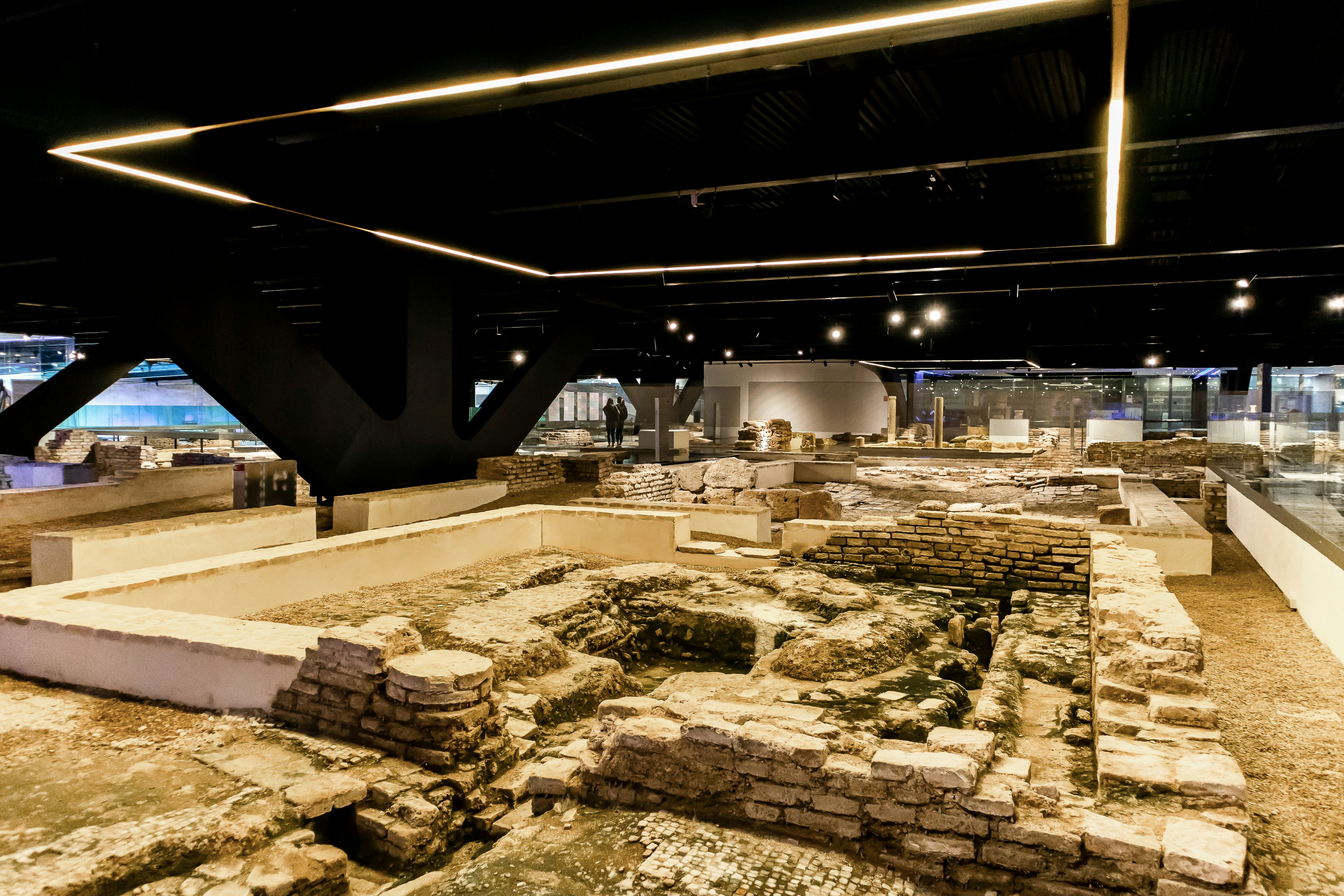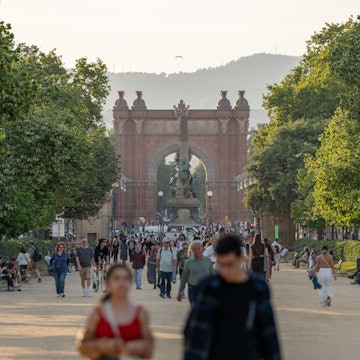

From exploring Andalusian culture to learning about science with the kids, here are Seville's best museums © BAHDANOVICH ALENA / Shutterstock
Although Seville’s big sights are mainly palaces, monuments, and other notable buildings, it does have a good collection of fascinating museums too.
You’ll find everything from classic art, science, and history exhibitions to more unusual and unique museums dedicated to Andalusian cultures such as flamenco, ceramic tiles, and popular traditions. While it's usually fine to turn up and buy tickets for most museums on the day, some may be limiting visitor numbers due to COVID-19, so it’s always best to check in advance. Here’s our pick of the best museums in Seville.
Learn about Andalusian culture at Museo de Artes y Costumbres Populares
Seville’s Museum of Art and Traditional Culture is located within the Parque de María Luisa and is dedicated to the ethnological heritage of Andalusia. Housed in an ornate Mudéjar Pavilion, designed for the 1929 Ibero-American Exhibition, its collections comprise everything from clothing and ceramics to craftworks and utensils. The museum’s collection of lace and embroidery is one of the most important in Europe with over 6000 pieces. There are also rooms filled with antique glass, old traditional toys, and Andalusian postcards.
Museo de Bellas Artes is Seville's best classical art gallery
Seville’s fine arts museum is housed in the beautiful old convent of Merced Calzada and is filled with outdoor patios and stunningly elegant rooms. The best of Seville’s galleries, it has been open to the public as a museum since the 19th century and showcases a diverse collection of paintings, ceramics, sculpture, furniture, and gold and silverworks. Its most important works are of course its paintings, which mainly date from the 17th century's Baroque era and depict Andalusian life in all its glory. It’s home to works by some of Spain’s most famous artists including Bartolomé Esteban Murillo, Juan de Valdés Leal, and Francisco de Zurbarán. Admission is free, but you are required to register your visit in advance while COVID-19 safety procedures are still in place.

Centro Andaluz de Arte Contemporáneo showcases modern art
Located on Isla de Cartuja in the middle of the Guadalquivir River, Seville’s Contemporary Arts Center is housed in an elegant former monastery dating back to the 14th century and today is one of the best places for modern art in Andalusia. The permanent collection features works by the likes of Louise Bourgeois, Luis Gordillo, Candida Hofer, Rebecca Horn, and Joseph Kosuth. As well as the artworks, visitors can see remnants of the old monastery such as the cloisters, the monks' chapter, the refectory, and the various chapels. The museum is also a venue for hosting concerts, lectures, film screenings, and workshops, and has a selection of well-curated temporary exhibitions. If you’re looking for budget-friendly things to do in Seville, the center offers free entry in the evenings from 7–9pm Tuesday to Friday and all day on Saturday.
Hospital de la Caridad is packed with religious art
The old Baroque Hospital de la Caridad and church is both a fascinating architectural site and a museum for religious art. Founded in the late 17th century as a hospice for the poor and elderly, its impressive facade is decorated in Seville’s traditional ceramic tiles. The main highlight is its gold-adorned chapel, which displays famous religious works by the likes of Murillo, Valdés Leal, Zurbarán, and Roldan. Some of the most notable pieces include Zurbaran’s Christ Crucified, Valdés Leal’s End of World’s Glory and Roldan’s statue of Santo Cristo de la Caridad.

Museo Antiquarium is ideal for archaeology enthusiasts
This archaeological site was discovered during the excavations for Metropol Parasol – better known as Las Setas or mushrooms – the huge wooden lattice structure that shades Plaza de la Encarnación. Unearthed here were some fascinating Roman remains, dating from around 30 CE up until the 6th century, as well as a stunning Moorish house dating back to the 12th and 13th centuries. Today, the basement of this structure has been turned into the Museo Antiquarium, where visitors can explore the remains protected under glass walkways. Entry is free if you have tickets for the Real Alcázar.
Museo Casa de la Ciencia is the best museum for kids
Seville’s Science Museum is housed in the historic Peruvian Pavilion, which was built for the Ibero-American Exhibition of 1929 and represents the unique architectural style of Peru. The best museum for kids in Seville, it’s both a space for learning and a center for scientific research. It features three permanent exhibits on the marine world, geology, and mollusks, as well as a planetarium. Its exhibits include everything from whale skeletons and ancient fossils to 2000 mollusk specimens. There is also one whole floor dedicated to contemporary exhibitions, which can cover a range of themes from maps and voyages to Andalusian invertebrates.
Music and dance lovers should visit Museo del Baile Flamenco
Andalusia is the birthplace of sultry Spanish flamenco and Seville is one of the most important places in the country to learn about this passionate art form. One of the must-see museums in Seville, the flamenco dance museum is tucked down a tiny alleyway hidden within the Barrio Santa Cruz. It’s built around a central patio, where some of the city’s best flamenco shows are performed. Founded by the dancer and choreographer Cristina Hoyos, it takes you on a journey of discovery through several interactive rooms, from the origins of flamenco to the present day. The museum displays spectacular costumes, musical instruments, and plays the haunting sound of the flamenco songs throughout.

Centro Cerámica Triana is Seville's most unusual museum
Everywhere you look in Seville, you’ll find beautiful ceramic tiles decorating floors, walls, facades of buildings and even park benches. Most of these ceramics were made in the traditional neighborhood of Triana, which lies across the Guadalquivir River. Today this is where you’ll find the Centro Cerámica Triana, housed in the former Santa Ana ceramics factory. The museum looks at both the anthropology and ethnography surrounding ceramics in the region, as well as exhibiting original old kilns, and of course the ceramics themselves.
Take a tour of unique architecture at Plaza de Toros de la Real Maestranza
Seville’s bullring or Plaza de Toros is one of the city’s most emblematic buildings with its striking white-and-yellow Baroque facade. It’s the oldest and most important bullring in the whole of Spain. While it’s understandable that you may not want to watch a bullfight, the small museum within the bullring itself is well worth a visit. The visit includes a guided tour of the bullring to learn all about its history and architecture. There’s also an excellent art gallery full of paintings, prints, lithographs, and engravings by some of Spain’s most celebrated artists including Velázquez and Francisco de Goya.
You might also like:
The 9 best day trips from Seville
How to explore Seville with kids
Top 20 free things to do in Seville















